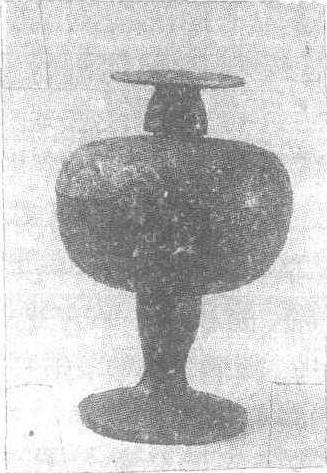错铜嵌绿松石铜豆
战国晚期青铜礼器,长清县归德镇岗辛战国墓器物坑出土。同类器四件。豆盘半球状,喇叭形圈足,覆钵状盖,扁平圆捉手。盖、器均用黄铜丝、绿松石镶嵌成几何勾连云纹,作工精细,纹饰华丽,是古代镶嵌工艺珍品。通高27.5厘米,盘径18.5厘米。现藏山东省文物考古研究所。

战国错铜嵌绿松石铜豆
| 词条 | 错铜嵌绿松石铜豆 |
| 类别 | 中文百科知识 |
| 释义 | 错铜嵌绿松石铜豆战国晚期青铜礼器,长清县归德镇岗辛战国墓器物坑出土。同类器四件。豆盘半球状,喇叭形圈足,覆钵状盖,扁平圆捉手。盖、器均用黄铜丝、绿松石镶嵌成几何勾连云纹,作工精细,纹饰华丽,是古代镶嵌工艺珍品。通高27.5厘米,盘径18.5厘米。现藏山东省文物考古研究所。
战国错铜嵌绿松石铜豆 |
| 随便看 |
开放百科全书收录579518条英语、德语、日语等多语种百科知识,基本涵盖了大多数领域的百科知识,是一部内容自由、开放的电子版国际百科全书。